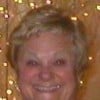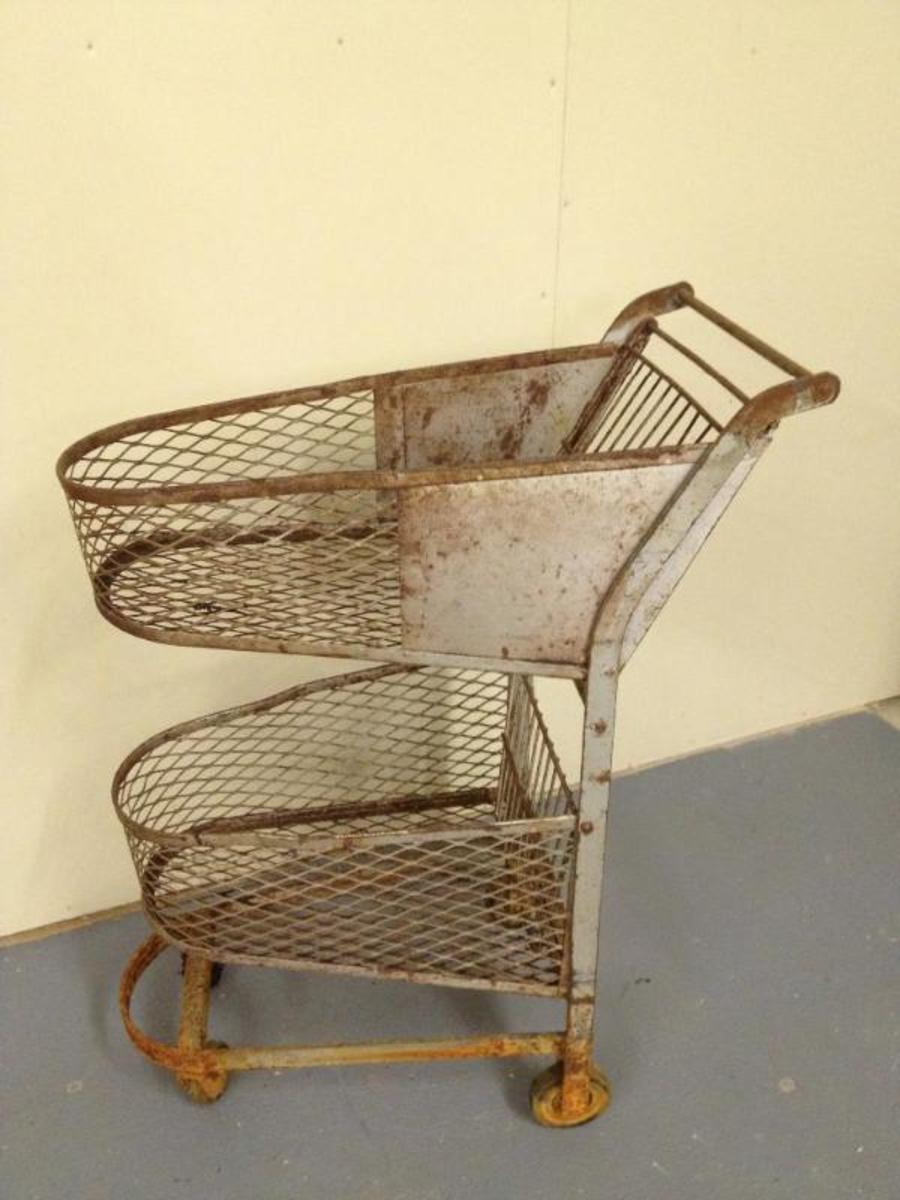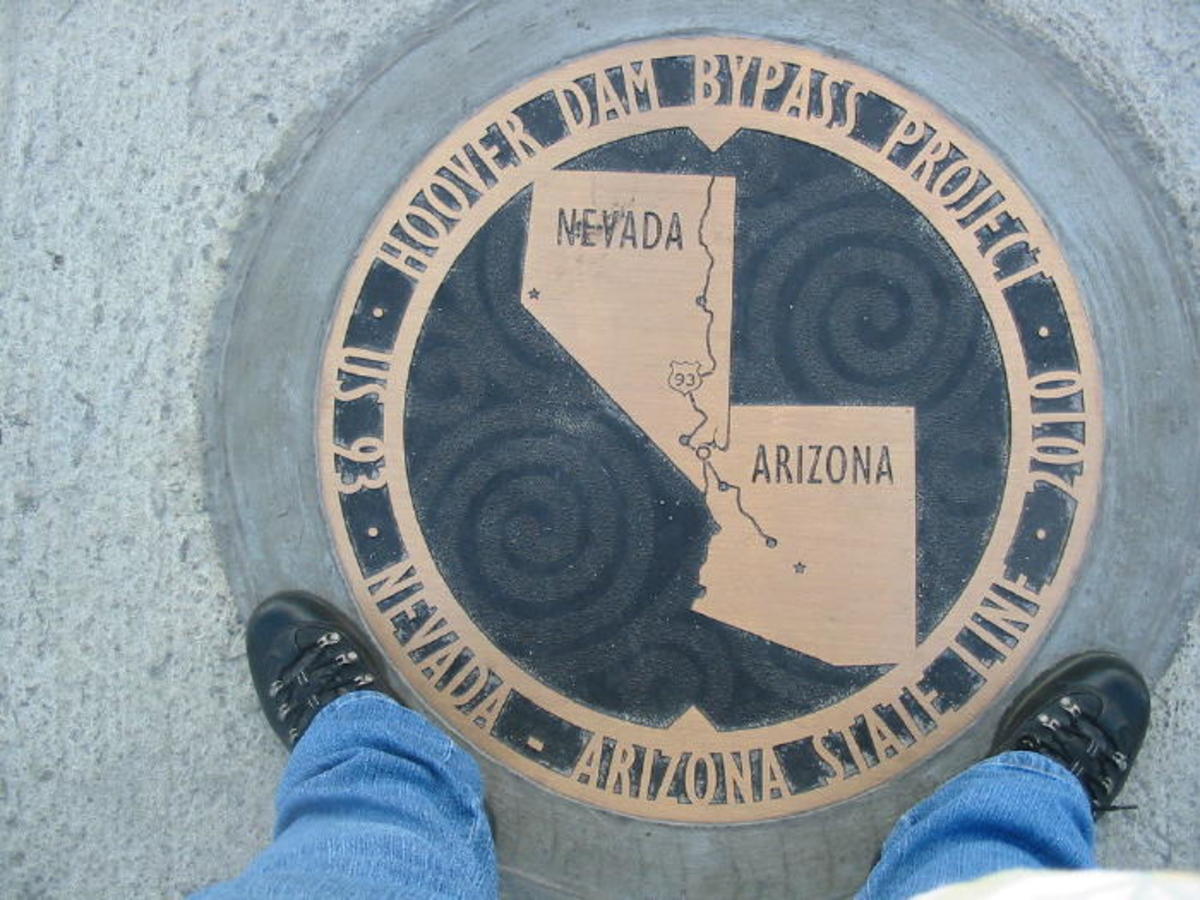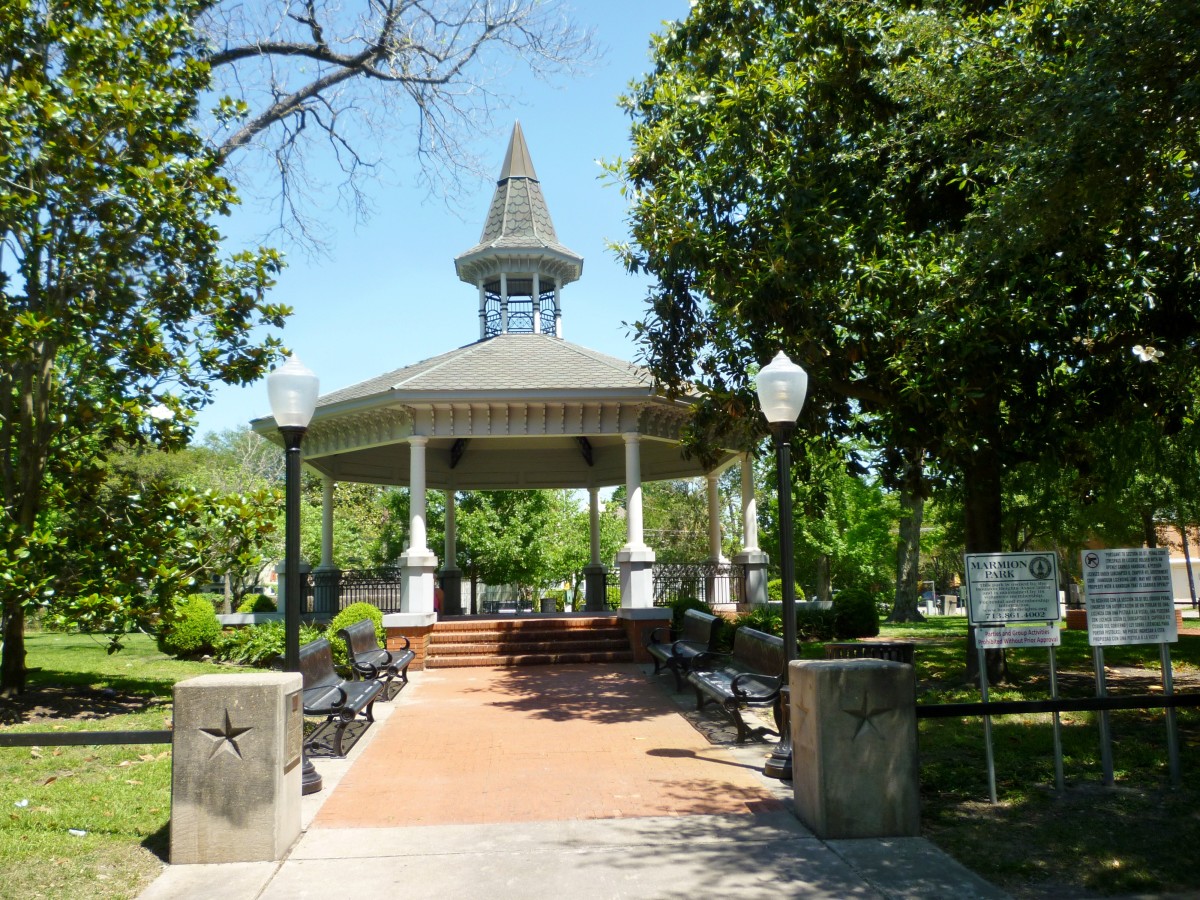- HubPages»
- Travel and Places»
- Visiting North America»
- United States
Cuttyhunk, The Most Populated Elizabeth Island
Settled for the Sassafras
If you want peace and quiet with a time to relax and do nothing; I suggest you head to the island of Cuttyhunk. Cuttyhunk is the only Elizabeth Island that allows visitors. The island is reached by your boat or by ferry service from New Bedford, Massachusetts. The Elizabeth Islands are part of the Town of Gosnold. Most of the islands are owned by the Forbes family. Cuttyhunk and Penikese are the only that are public state land. Cuttyhunk is the 4th largest of the Elizabeth Islands. More than half of the residents of the Town of Gosnold live on Cuttyhunk. The remaining citizens live on Naushon.
Cuttyhunk is only a mile and half long or about 580 acres. It is the most populated of the Elisabeth chain of island. It is the farthest west, making it closest to the town of Dartmouth. It is the least populated town in the state of Massachusetts and it is the smallest of the 351 towns in the state.
The first settlers on Cuttyhunk were the Wampanoag Native Americans. They used the island as a summer camp, where they hunted, fished and kept gardens. Bartholomew Gosnold landed on the island in 1602. He made a fort and planned to harvesting sassafras. The Native Americans used the leaves of sassafras for medical treatments. Gosnold hoped to ship large amounts back to Europe. After only one month he quit and sailed back to England.
Bartholomew Gosnold and his crew went ashore on Penikese to explore. The story goes, they scared four Native Americans who ran away and hid. The crew stole their canoe and left. The island was home to many early settlers and then in 1904 The State of Massachusetts purchased it for a leprosy hospital. Later it was opened as a state school for boys with special needs. The school is closed and the island is mainly a bird sanctuary.
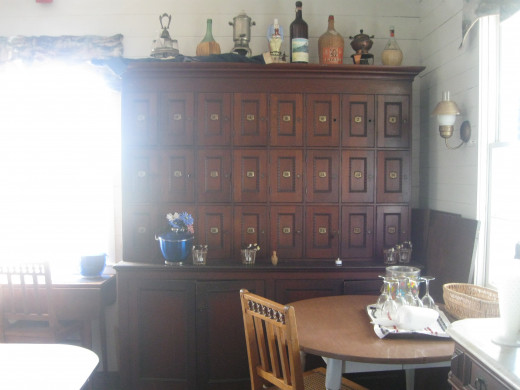
What, No Women!
In 1641 the island was purchased by Thomas Mayhew Sr. The island was known for good bass fishing. In 1658 the Chief or Sachem of the Wampanoag Tribe transferred the deed of ownership to Mayhew. The island had many owners until 1693 when Peleg Slocum became the sole owner. For the next 200 years the Slocum family lived on the island.
One of the most famous people born on Cuttyhunk was Paul Cuffee (1759 – 1817) He was a Quaker businessman, a sea captain and an abolitionist. His parents were from the Aquinnah Wampanoag Tribe and West African Ashanti. His dream was to free African Americans and freed slaves. He wanted to start a prosperous colony in Africa. He helped colonize Sierra Leone.
In 1864, seven millionaires from New York sailed into Cuttyhunk aboard the yacht ‘Theresa.’ They had been looking to replace the West Island Fishing Club in Sakonnet Point, which they owned. The word was out that the waters around Cuttyhunk provided the greatest fishing with record bass being caught daily. The group purchased a large portion of the island and started writing the rules for the club.
The first rule was, no women. If woman accompanied the men on a trip, they would have to stay in the village. They started off with 50 members, each paying $400 to join and yearly dues of $100. The club had 16 fishing stands. These were small shacks around the shore. The men would walk via boards and rocks to get to the fishing area. Every night the members would draw numbers to see which shack they would have the next day. A ‘chummer’ would bring the bait and hook the lines, net the fish and chum the waters for the master. Chummers were local islanders, happy to have a job. The club was more of a social event, not so much serious fishing. The club’s flag depicts a rocking chair indicating, relax, eat, drink and fish in that order.
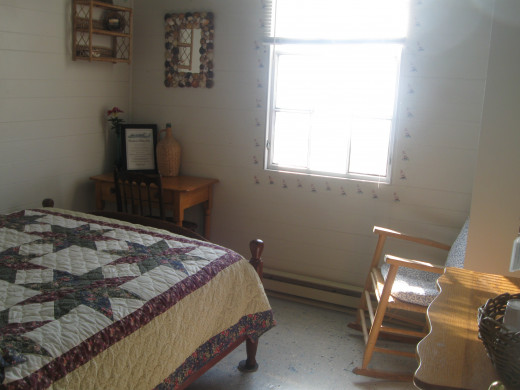
Record Bass Fishing
Cuttyhunk is and was a dry island. Visitors bring their own choice of liquors and wines. The original club provided locked lockers where men could store their personal bottles. After a hard day of fishing the men would gather at the fireplace and talk of the one that got away, while sipping brandy or choice beverage.
The member who caught the largest fish was awarded the ‘high hook.’ They received a diamond studded pin in the shape of a fish hook. A small gold pin was also awarded for the smallest fish. Whoever had the high hook kept the pin until a larger fish was caught.
Fishing was good and the club flourished for nearly thirty years. Some members left and built their own club on Pasque Island that would allow women to stay with them. Many rich and famous men visited the island of Cuttyhunk and captured the allure of bass fishing. Around 1912, the magic started to dwindle. Only one fishing stand remained.
Cuttyhunk islanders can brag that they discovered night fishing from a boat. The story is told by local residents. Local guide Captain Robert Tilton got drunk one night with his fishing buddies. They dared and bet him that they could catch fish in the middle of the night. They hooked 22 bass off Sow & Pigs reef and the legend was born.
View from Top
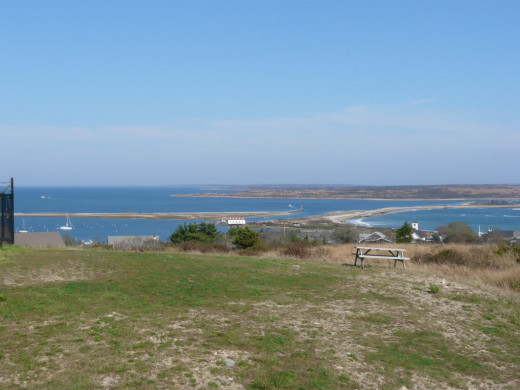
The View Go Forever
The Club has had many owners over the years. The building has been restored and many furnishings remain. They club is now a family bed and breakfast. The views of both Vineyard Sound and Buzzards Bay are breathtaking. The fishing is still excellent. You can rent a room from $170, to $195 per night. If you want peace and quiet, this is for you. If you want excitement and nightlife, you should choose another place.
The view from the Fishing Club includes Vineyard Sound and Buzzards Bay. Looking on the Vineyard side you will notice old metal, broken and buried barges. A severe storm in October, 1944 made the island of Cuttyhunk into two islands. Canapitsit was located to the east and Cuttyhunk as the main land. The storm breached the land, leaving the Coast Guard station cut off from the residents. The Coast Guard station built in 1935 was located near the Canapitsit Channel. Over the next several years, the breach became wider and wider, spilling stones and sand into the anchorage pond and filling the channel. Boats bring supplies; mail and people to the island ran aground or couldn’t proceed in the channel.
Barges Buried by Sand
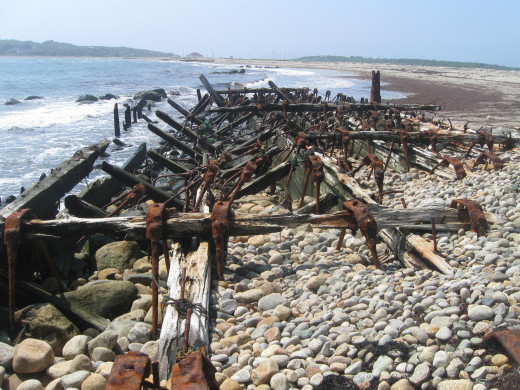
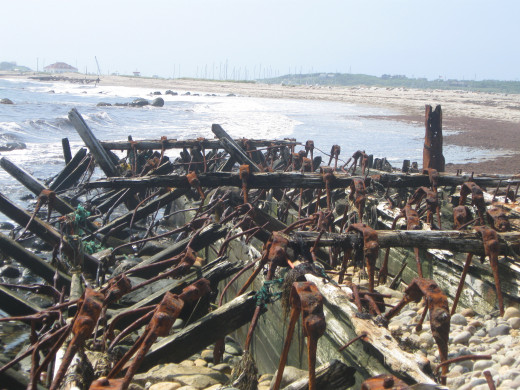
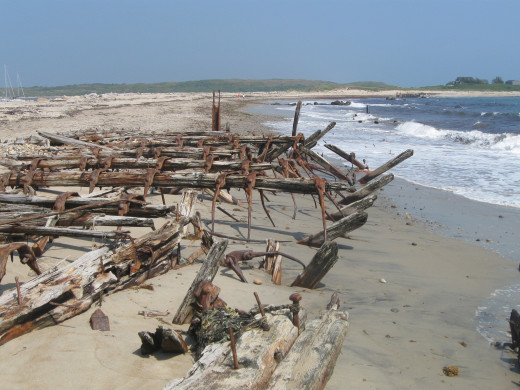
Good Sound Planning
There were many suggestions and some outlandish ideas of how to build a causeway. The Federal government decided the benefits of helping the people of Cuttyhunk were not worth the cost. The chief civilian engineer for the United States Army Corps of Engineers in Boston, Mr. Henry Whitcomb, came up with a plan to use abandoned car floats to make a man-made causeway.
Before the 1930’s, the only way to get railroad cars across the Hudson River to Manhattan was accomplished by loading the train cars onto ferries. These ferries were called ’car floats.’ They were 250 feet long, 35 feet wide and 10 feet deep. The train cars would be placed on tracks attached to the deck. Each car float would hold 25 freight cars. When the railroad bridge replaced the need for the car floats, they were abandoned and used for other ideas.
Mr. Whitcomb’s idea was to lay these car floats along the Vineyard Sound side of Cuttyhunk. Once the floats were sunk, they would be filled with stones and sand and act as a breakwater that would eventually fill in and rebuilt the causeway. During the work season of 1949, ten floats were towed into Cuttyhunk harbor. A trench was dug out for each barge. Once in place the bottom was blown out and sunk in position. Some of the railroad rails were removed and remain today at the fish dock area. The decks were removed so the empty shell would fill up and remain in place for years to come.
In 1950 the crew started working from the Canapitsit end of the island. The borrowed pit they used is now a private landing strip for a small plane kept on Canapitsit.
The plan is a huge success for the causeway is in use to this day. The Coast Guard station that was located in Canapitsit was moved in 1952 to Menemsha. Unfortunately a fire destroyed the boat house and dock in 2010. The station was rebuilt in 2013.
More Buried Treasures
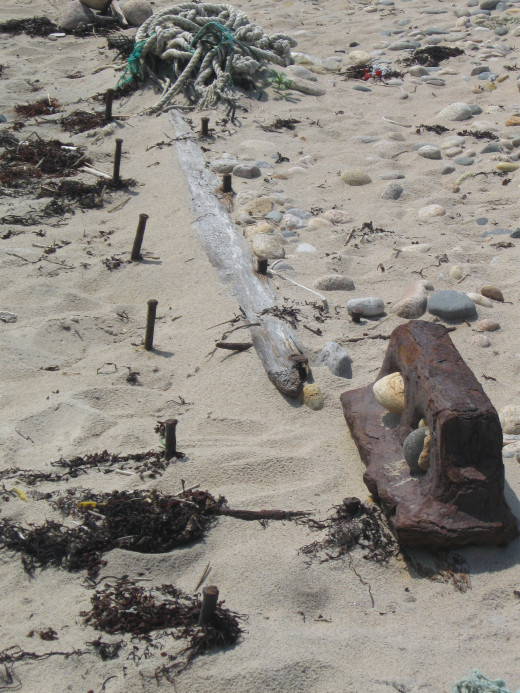
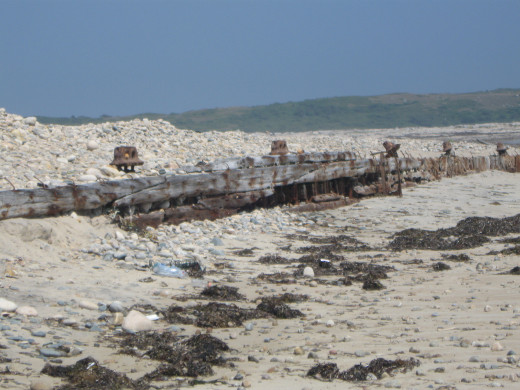
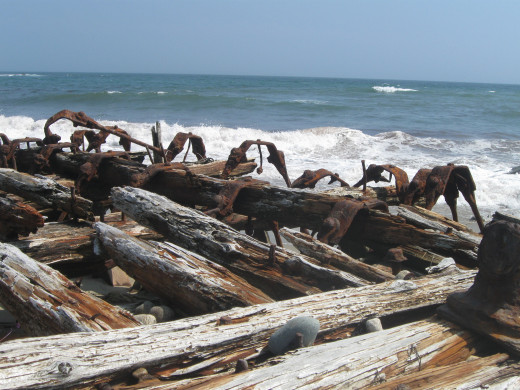
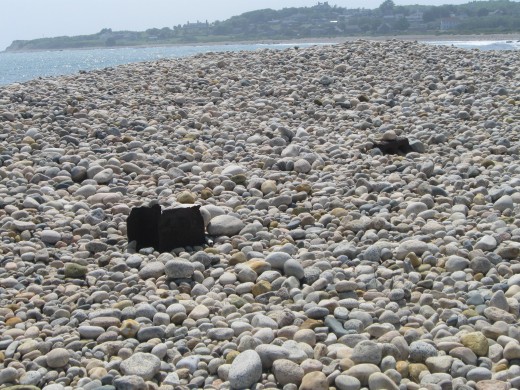
Relax and Enjoy
The sand and stones change every year as the powerful ocean sculptures the shore line.
You can’t leave Cuttyhunk without walking up the hill to the highest point, Lookout Hill. In 1941, the Coast Guard built bunkers as watch spots to look for Nazi U-boats. Children can climb down into these dark, dirty places, and adults can look at Newport, Martha’s Vineyard, Dartmouth, New Bedford, Vineyard Sounds, and Buzzards Bay. What a view!
Cuttyhunk and the original families that live there are unique and special.
